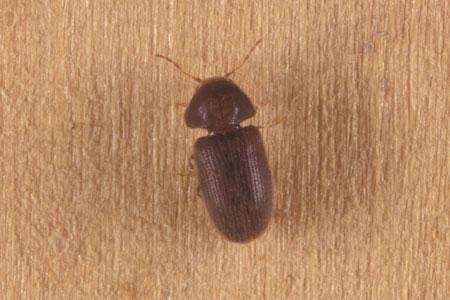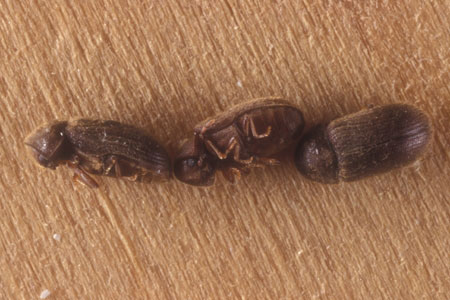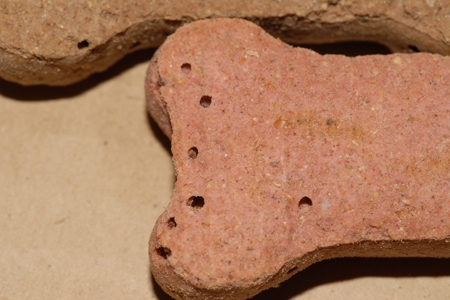Active Seasons




Appearance and Size Facts of Drugstore Beetles
Drugstore beetles are a common household pest in south Florida that can infest your pantry. Be careful with these tiny beetles—they can do much damage to stored goods. Drugstore beetles are just 2 to 3 millimeters long and have an oval, reddish-brown body and flattened back.
They have flat wings with clear veins between them and a head bent downward with short, three-segmented antennae. Their larvae can grow 4 to 5 millimeters, mature, and emerge as adults in three to four weeks. They’re cream-colored grubs with brown heads and three pairs of legs.
Identifying Drugstore Beetles From Other Beetles
Drugstore beetles aren’t the only tiny beetles that can invade your pantry, so it’s essential to differentiate them from other beetles. The drugstore beetle has a reddish brown body, not like the rusty red cigarette beetle. A red flour beetle has bright yellow bands on its wing covers, while other beetles, like saw-toothed grain beetles, have a more elongated, cylindrical body. Check for antennae with three segments rather than the 11 segments of a long-antennaed grain beetle.
We offer beetle control for drugstore beetles in the following locations and their surrounding areas:

Behavior and Habitat of Drugstore Beetles
Drugstore beetles can fly, but don’t worry; they can rarely go far. The larvae and adults will chew tiny holes in packaged food, including cereal, baking ingredients, spices, dried fruits and nuts, pet food, tobacco, and herbs. To control these beetles, you must be vigilant, especially in the kitchen. Females can lay up to 75 eggs directly on food and packaging. The larvae tunnel through food for about four to 20 weeks before building their cocoons and maturing.

Signs of Infestation of Drugstore Beetles
If you find adult beetles in your pantry or cupboards, that’s an indication you’ve got a drugstore beetle infestation. Their bodies are oval, flattened, typically reddish-brown, and 3 to 4 millimeters long. In addition, homeowners may see the larvae, which look like tiny white grubs. Small pinholes in grains, flours, or food packaging is another telltale sign.

Tips for Prevention of Drugstore Beetles
The best way to prevent drugstore beetles in your south Florida home is to prioritize proper food storage practices. Keep dry goods like cereals, baking ingredients, and spices in airtight containers. As a general pest control measure, ensure your pantry gets cleaned and vacuumed regularly. You can significantly reduce your chances of encountering drugstore beetles by diligently removing spilled food or debris.
Getting Rid of Drugstore Beetles
If you want to get rid of drugstore beetles in your home, hire a professional pest control service. You can determine the best treatment option if you talk to a professional. With expert guidance from south Florida pest control specialists, you can ensure a thorough and targeted approach to eliminating drugstore beetles.
Effective Drugstore Beetle Control Solutions
With professional help, assessing the extent of an infestation of drugstore beetles is easy. Count on Hulett Environmental Services for the best protection of your home. For over 50 years, we’ve been delivering exceptional pest control solutions in south Florida as one of the top 25 pest control companies in the U.S.
Ready to get rid of drugstore beetles and other common household pests? At Hulett, we’re well equipped to do just that! Schedule a free inspection or give us a call today to learn more about our comprehensive drugstore beetle control services in Florida.



